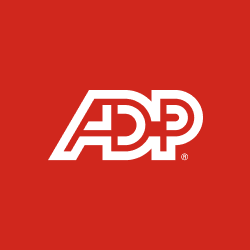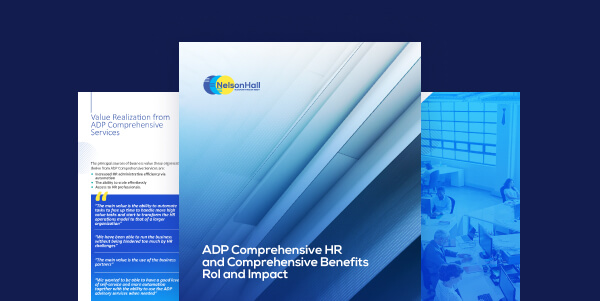The coronavirus (COVID-19) has caused many employers to shift work arrangements, whether through remote work, furlough or other measures. As state and local governments adjust regulations, you may be planning to reopen your place of business, but in doing so, it’s critical to make informed decisions about the wellbeing of both your employees and your customers. A workplace health and safety checklist can help you address the various return to work issues affecting different industries and locations.
Workplace health and safety checklist
This checklist provides a glimpse into how ADP helps thousands of businesses navigate COVID-19 every day, which you can use as a starting point to create your own workplace health and safety measures. If you need personalized guidance for your business and employees, ADP’s HR Outsourcing can support you with full-service HR, payroll, benefits, compliance and safety.
Governmental guidance and mandates
- Review federal and state Occupational Safety and Health Administration (OSHA) guidance and update policies and procedures, if applicable.
- Determine whether any state and local mandates will limit the reopening of your facilities.
- Check if relevant state and local governments have issued any mandates regarding social distancing, sanitation and mask use.
Worker safety
- Develop an infectious disease preparedness and response plan to help guide your business’s protective actions against COVID-19 and address your employees’ health risks.
- Use telecommuting, staggered scheduling and group scheduling to minimize the impact of a COVID-19 exposure on your workforce.
- Comply with applicable social distancing mandates by implementing physical changes to the workplace, such as moving workstations, altering layouts and access points, and installing barriers.
- Evaluate mandatory or voluntary use of facemasks and train employees on how to properly put them on and take them off.
- Evaluate mandatory or voluntary use of personal protective equipment (PPE), such as masks, respirators, gloves, face shields, etc.
- Instruct employees to frequently wash their hands or use hand sanitizer and practice proper respiratory etiquette, including covering coughs and sneezes.
- Develop and implement employee safety training on your COVID-19 response protocols.
Worksite precautions
- Implement infection control protocols that are consistent with Centers for Disease Control (CDC) and OSHA guidance.
- Implement cleaning and disinfection protocols that are consistent with CDC and OSHA guidance.
- Evaluate your HVAC system prior to re-occupancy after a prolonged shutdown and increase ventilation and air exchange in the building after exposure.
- Post the appropriate signage and notices required by federal, state and local authorities, such as hygiene/handwashing reminders, social distancing guidelines, etc.
Workplace procedures
- Communicate with employees about the steps taken to ensure their safety.
- Remind and encourage employees not to report to work when sick.
- Have a plan to address and isolate employees with reported symptoms or a COVID-19 diagnosis, while notifying other employees and maintaining confidentiality.
- Develop and implement protocols for employees to return to work after home isolation due to COVID-19.
- Impose appropriate limits on visitation to your facilities and post safety policies and procedures for visitors, contractors and customers.
- Impose appropriate limits on the size of in-person meetings and seating proximity.
- Record COVID-19 cases in accordance with OSHA guidelines.
- Follow guidance from the Equal Employment Opportunity Commission (EEOC) regarding the confidentiality of COVID-19 medical records obtained during health checks.
Employee health screenings
- Decide whether to implement an employee and visitor COVID-19 screening program.
- Understand all applicable mandates and recommendations for screening programs, such as safety precautions, data collection, administrator training programs, etc.
- Ensure that any mandatory employee medical tests are “job related and consistent with business necessity,” as well as accurate and reliable.
- Refer to CDC and EEOC guidance for requiring temperature checks as part of a screening program and protect employees who administer the test.
- Train employees on how to screen themselves for symptoms.
- Consult applicable state and local law for any variations of CDC or EEOC guidance before designing and implementing a contact tracing program.
Industry-specific guidance
- Follow industry-specific guidance from the CDC, OSHA and/or the American Industrial Hygiene Association (AIHA).
Employee relations
- Properly document all return-to-work decision-making processes and employee communications.
- Ensure that return to work letters include information about return dates and schedules, new policies, at-will employment disclaimers and any changes to pay, benefits or PTO.
- Create a clear employee communications plan about the business’s plans to reopen.
- Train employees on new policies, protocols and rules.
- Consider updating job descriptions to address changes in job duties and essential job functions.
- Provide reasonable accommodations to employees who may be more vulnerable to COVID-19 because of underlying health conditions.
- Assess whether leave and other accommodations are required by the Americans with Disabilities Act, Family and Medical Leave Act, Families First Coronavirus Relief Act, and state laws.
For more detailed guidance on workplace health and safety and lists of available resources, download ADP’s Prioritizing Safety in the Workplace checklist.



